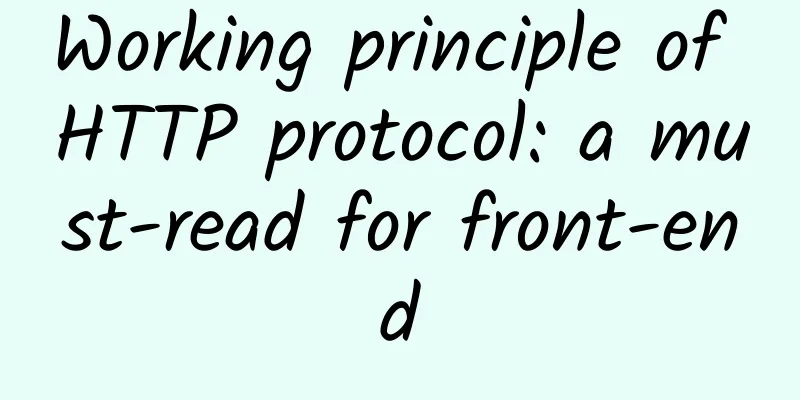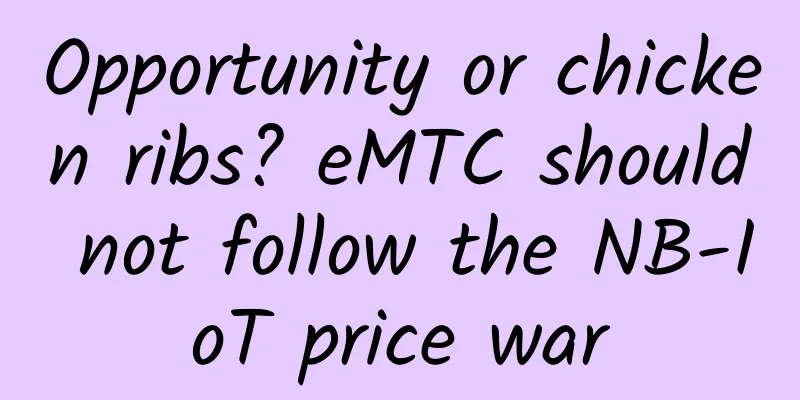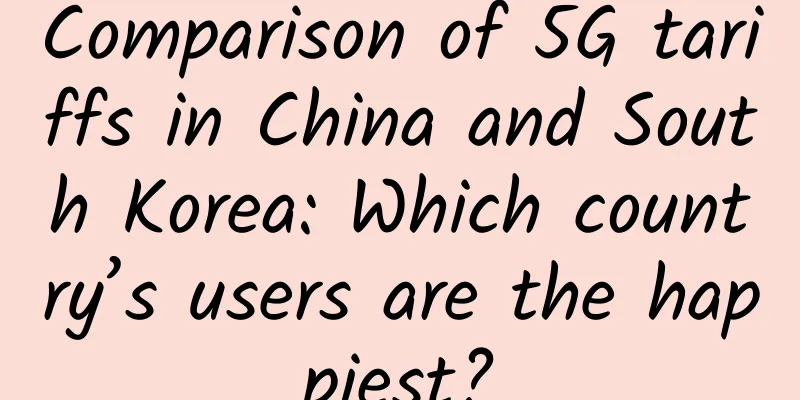Working principle of HTTP protocol: a must-read for front-end

|
Why does the front-end need to understand the HTTP protocol? When you cooperate with the back-end, you need to access the back-end data interface. At this time, there are two key points that you must understand when connecting with the back-end: HTTP protocol and AJAX technology. AJAX is a technology that accesses server data. HTTP protocol: It is a regulation. When we use AJAX technology on the front end to access back-end data, we must use HTTP protocol to request information, so HTTP and AJAX have a very close relationship. Let's take a look at the HTTP protocol. 1. Development History of Front-end Development1.1 Server-Side RenderingServer side rendering (SSR): Early web pages were completed through back-end rendering.
shortcoming:
2.2 Separation of front-end and back-endThe front end only needs to write the client code independently, and the back end only needs to write the server code independently to provide the data interface. The front end accesses the back end data interface through AJAX requests and displays the Model in the View. 2. Introduction to HTTPHTTP protocol: Hypertext Transfer Protocol (HTTP).
III. Development Stage3.1 0.9The 0.9 protocol is a simple and fast protocol suitable for various data information. It is an unordered protocol for exchanging information and is limited to text. Since the content cannot be negotiated, the handshake and protocol of both parties do not specify what the content of both parties is, that is, pictures cannot be displayed or processed. Only get requests are supported. 3.2 1.0It supports request methods such as POST and HEAD, request headers, response headers, and more data types (no longer limited to text data). However, each request from the browser needs to establish a TCP connection with the server, and the TCP connection will be disconnected immediately after the request is processed. Each time a connection is established, performance loss is increased. 3.3 1.1 (currently the most widely used version)In the 1.0 protocol, both parties stipulated the connection method and connection type, which has greatly expanded the scope of HTTP, added request methods such as PUT and DELETE, and adopted persistent connections (Connection: keep-alive), so that multiple requests can share the same TCP connection. 3.4 2.0HTTP2.0 is preceded by HTTP1.0 and HTTP1.1. Although there were only two versions before, the protocol specifications contained in these two versions are so huge that any experienced engineer would be troubled. New versions of network protocols do not immediately replace old versions. In fact, 1.0 and 1.1 coexisted for a long time afterwards, which was determined by the slow update of network infrastructure. 4. Working PrincipleHTTP is based on the client/server model and is connection-oriented. A typical HTTP transaction process is as follows:
characteristic:
5. OperationHTTP is based on a request/response paradigm. After a client establishes a connection with a server, it sends a request to the server in the format of a uniform resource identifier, a protocol version number, followed by MIME information including request modifiers, client information, and possible content. After receiving the request, the server gives the corresponding response information in the format of a status line including the protocol version number of the information, a success or error code, followed by MIME information including server information, entity information, and possible content. In fact, to put it simply, any server, in addition to HTML files, also has an HTTP resident program to respond to user requests. Your browser is an HTTP client that sends requests to the server. When you enter a start file in the browser or click a hyperlink, the browser sends an HTTP request to the server. This request is sent to the URL specified by the IP address. The resident program receives the request and sends back the requested file after performing necessary operations. In this process, the data sent and received on the network has been divided into one or more packets. Each packet includes:
TCP/IP determines the format of each data packet. If you were not told in advance, you would not know that the information is divided into many small pieces for transmission and then reassembled. Most HTTP communications are initiated by a user agent and involve a request for a resource on an origin server. In the simplest case, this is probably done over a single connection between a user agent (UA) and an origin server (O). The situation becomes more complicated when one or more intermediaries appear in the request/response chain. There are three types of intermediaries: Proxy, Gateway, and Tunnel.
|
>>: Payment platform: detailed explanation from gateway layer to data analysis layer
Recommend
Wireless sensor network standardization progress and protocol analysis
[[188829]] As an application-oriented research fi...
Distributed ID Solution Detailed Explanation
In a distributed system, it is very important to ...
Explore VLAN aggregation: How to optimize your network performance
VLAN technology is widely used in campus networks...
4 Ways to Save Money in Your Data Center
When data center downtime costs an average of nea...
The three major operators delisted from the US and returned to the A-share market
Recently, China Mobile issued an announcement sta...
Serverless Engineering Practice | Quickly Build Kubeless Platform
Quickly build a Kubeless platform Introduction to...
Dynamic routing OSPF basics, area division, LSA types, one minute to understand
1. OSPF Message OSPF protocol packets are directl...
Looking back at the journey of Huawei's ICT ecosystem, I would like to give a thumbs up to the partners who have jointly built a prosperous ecosystem!
In June, although the "Huawei China ICT Ecos...
What can 5G technology do? It will have a significant impact on 20 industries
First of all, we must know what 5G is. In a nutsh...
Optical network campus under the background of new education infrastructure: the construction of Ethernet all-optical network of Anhui Sino-Australian Vocational College of Science and Technology
Anhui Sino-Australian Vocational College of Scien...
Header comparison between IPV4 and IPV6
An IP packet consists of two parts: header and pa...
From concept to practice, the trend of blockchain is coming
In accordance with the requirements of blockchain...
Will your package be slowed down if you don’t upgrade to 5G? 4G network speeds of the three major operators were measured in four locations in Beijing
"China Unicom launched a 5G package for 239 ...
What exactly is Spine-Leaf?
[[401509]] Today's story begins 67 years ago....
The outbreak of 5G still cannot prevent the overall decline of the mobile phone market
In this year hit by the epidemic, sales in the mo...









